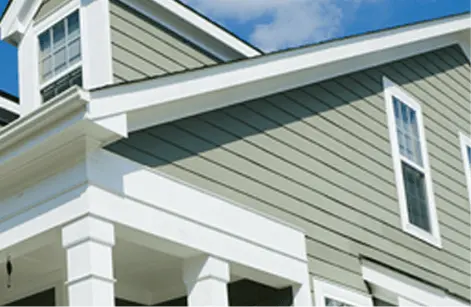Mighty Dog Roofing provides the the best choice located at Plano Texas for wind damages to roofs professionals will work diligently to restore your home’s rooftop as quickly as possible. It’s terrifying to witness wind damage to the rooftop in Plano Texas. When the storm has passed it is crucial to be calm and call our roofing company immediately after talking to the representative of your homeowner. Whatever you do, stay clear of those “snowbird” people who are likely to be wandering around your property and waiting to have you sign an agreement permitting them to fix your roof. We will never ask you for permission to do any kind of work to your property. We only desire to finish the job properly so that we will gain your trust.

Roof Shingle Wind Damage – Clearing Up the Confusion
You may think that wind has not damaged your roof if you don’t see any shingles blown off. Think again. Wind can cause a multitude of damages to your roof that will decrease its life and leave it susceptible to leaks and further damage. And you may never even know it!
When the wind blows, it creates an enormous amount of pressure on the shingles. Damages don’t occur from the wind itself getting underneath the shingles, but rather from the vacuum-like forces created on the surface. Have you ever watched video of a tornado approaching a house, and suddenly the entire roof lifts off the house as though it were a lid? It is the same uplift force that can cause damage to your shingles, albeit on a smaller scale.
The first thing wind uplift will do to your shingles is break the adhesive seal. Once that seal is broken, the shingles become susceptible to tearing off completely. These loose shingles will often flap up and down during the next thunderstorm, allowing rainwater to get underneath, where it isn’t supposed to be! Wind driven rain can then cause leaks and damage the interior of your home. Though many insurance companies and their engineering firm partners claim a broken seal is not damage, there is no doubt that it is damage. The shingles must be sealed down in order to do their job correctly. Every manufacturers specification emphasizes the fact that the shingles must be sealed. At a bare minimum, these shingles must be hand-sealed back down. This may not be possible with older shingles, depending on their condition.
In some cases when the seal of the shingle is broken, it will cause de-lamination of that shingle, or the one it was sealed to. In this case, the shingle cannot simply be resealed. Both shingles must be replaced. It is very possible an entire roof could need replacement because of de-lamination, even though all of the shingles are still in place.
Preparing Your Home for Wind Damage Before the Storm
When a hurricane, tornado or a severe storm hits, there’s not enough time to locate a suitable shelter, and even find the time to shield your home and property from the inevitable damage caused by wind. This is the reason you must prepare your home in advance of the storm strikes.
To do this, you’ll need to consider the features of your house, your financial resources and the building codes of your neighborhood. The Federal Emergency Management Agency has a checklist for homeowners:
How to Avoid Wind Damage
- Know your risks. Do you know the hazards in your community? How often do floods or wind storms happen? Call your emergency management office, or American Red Cross chapter for more information.
- Be sure that the roof sheathing has been properly installed. Roof sheathing refers specifically to the plywood or boards which are connected to the roof rafters and trusses. During a heavy windstorm the wind’s force flows from the roof down to the walls of the exterior and eventually to the foundation. Damage to homes occurs when winds are not transferred properly to the ground during a storm. A properly installed sheathing system helps ensure wind is transferred correctly. Make sure the sheathing nails haven’t missed the rafters. You’ll need to replace any sheathing nails that aren’t in the rafters.
- Be sure the end gables are secured to the roof. In a hurricane or another weather event, the side walls of the roof (end gables) endure a lot of damage and could collapse. Gable bracing typically consists of 2″x4″s placed in an “X” pattern on both ends of an attic. It runs from the top center of the gable’s end to the bottom of the brace of the fourth truss, and from the bottom of the end gable until the top of the roof,’ Federal Emergency Management Agency.
- Galvanized hurricane straps can be used to secure your roof to the wall. The galvanized straps will help keep the roof secured to the walls during the event of a severe storm. Make sure you are equipped with these for those who live in a high risk hurricane area.
Verify that the garage door is properly secured. If there is a storm, the garage door can be easily cut off, allowing wind to get into your home and blow out doors, windows walls, and even the roof. For assistance, contact an established garage door company.
- Protect your windows with storm shutters. Storm shutters are one of the most efficient ways to protect your home against high winds. They are available in aluminum, wood, or steel.